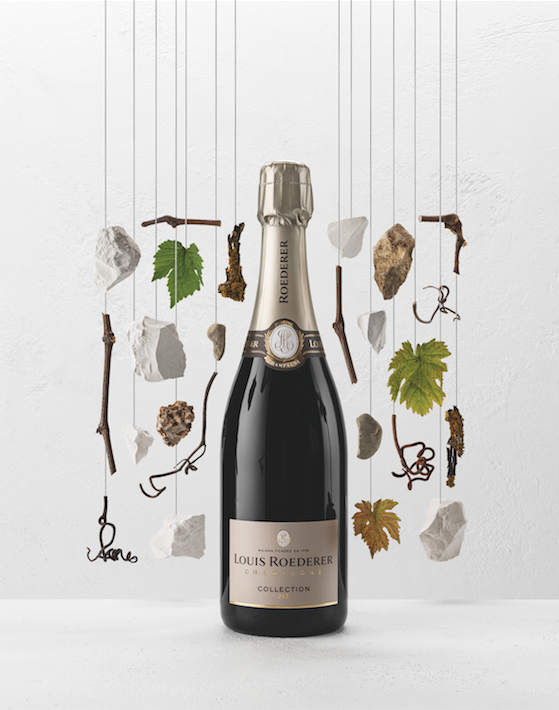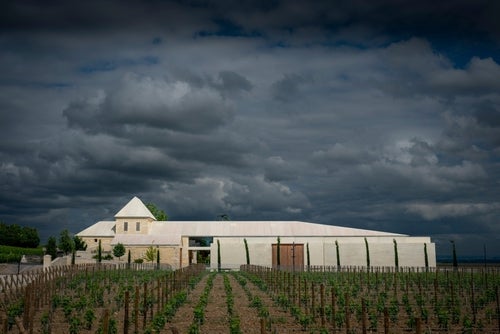
Louis Roederer is replacing its much-loved Brut Premier with a new Multi-Vintage cuvée: Louis Roederer Collection 242. Michael Edwards reports from the launch and reviews the first edition.
Roederer’s Chef de Cave Jean-Baptiste Lécaillon opened his virtual presentation on July 22 with his customary focus and clarity. “I am very happy to introduce Collection 242 and the idea of what is behind the wine; also why we moved at a time when it was seen as a great Multi-Vintage. So, we decided to rename it and change the philosophy of course behind. Not that we were not happy with Brut Premier, but it had done its job.”
From Brut Premier to Collection 242
A little context. Brut Premier was created in 1986, essentially as a reforming return to the precepts of rigorous winemaking following the 1970s, a nightmare decade in Champagne hit by relentless icy harvests. “Only two vintages were of great quality,” JBL reveals, “picking late into mid-October. Another pressing issue was that this was the age of the ‘new’ viticulture, bringing pesticides and clonal selection to increase yields.”
In response to this difficult situation, Roederer President Jean-Claude Rouzaud (a qualified enologist) created a blending philosophy that brought more ripeness to less ripe grapes—a necessary correction—through old reserve wines aged oxidatively in oak casks. Dosage, unsurprisingly, was 12g/l. At heart, this was a fight for ripeness, won by creating in the cellar what was lacking in ripeness in the vineyards.
For all the grandes maisons, the guiding ideal for Non-Vintage cuvées was a consistent house style. Over the past couple of decades, however, it has been possible to lower dosage levels thanks to the greater frequency of warmer harvests, the trigger being 2002, a fantastic vintage of beautiful, ripe wines. And especially in such a successful year, the desire for consistency inevitably meant lowering potential quality by adding less intense and less expressive reserve wines. “This is where we saw there was something wrong with the idea of blending,” Jean-Baptiste explained.
Nearly 40 years on from the first Brut Premier, there have been massive changes in Roederer’s vineyards, and contract growers have been encouraged to switch to organic or more sustainable regimes. Result: more concentrated, healthier grapes, harvested earlier.
Re-thinking the Multi-Vintage
For Jean-Baptiste, “All these factors have pushed us to rethink the blending and the Multi-Vintage idea. Today, when you blend a Multi-Vintage, the idea is not to fight for ripeness, it is to fight for freshness. Considering the tools available, the first tool is soil. I believe that most of the freshness in the context of climate change and viticulture is coming from deepening the roots of our vines, getting them into the chalk, to get more extract and lower pH (not more acidity as such). Soil is the reservoir of freshness that we must work on.”
Six years ago, a crucial decision was taken to change the process of buying Roederer’s Pinot Noir, Chardonnay, and Meunier grapes. Now, the house no longer buys grapes but rather rents plots under long-term contracts in chosen sites, “where the soil gives us the identity we are looking for.” The enologist in charge of the program reviews the plots three times a year to discuss the current growing conditions with the grower partners. As well as drawing as deeply as possible on the “reservoir of freshness” in the vineyards, the Lécaillon team, with the full support of CEO Frédéric Rouzaud, decided to create a perpetual reserve, half Pinot Noir, half Chardonnay, some 15,000hl (more than 396,000 US gallons) in total, with very little oxygen ingress. Reductively aged non-malo wines gives beautiful freshness here.
Perpetual reserve: Muting the vintage
The idea of the perpetual reserve started in 2012, and includes the same volume each of the 2013, 2014, 2015, and 2016 vintages—all winners. “The idea is to mute the vintage, mute the variety, and just retain the soil expression of different vintages, aged reductively. Then we add 10% oak-aged reserve wines. The average time in oak is just four years, which explains why the wine is fruitier than it was after eight years in oak for the Brut Premier,” Jean-Baptiste concluded.
The Collection number represents the number of blends since the foundation of the house in 1776, and will eventually allow Champagne lovers to choose their Collection release according to their preferred degree of maturity—another advantage of the new approach.
Tasting Louis Roederer Collection 242
Collection 242 comprises 34% perpetual reserve, 10% oak-aged reserve wine from the 2009, 2011, 2013, 2014, 2015, and 2016 vintages—this combined 44% is where the real revolution is taking place—and 56% from the 2017 vintage, especially Chardonnay, the most successful variety in that testing year, plus Pinot Noir and Meunier from the Vallée de la Marne in particular.
Fine, elegantly restrained, fresh color, lemon-tinted pale gold, as if the complexity of the perpetual reserve is already beginning to work
its magic in the hidden interior of the wine. The bubbles are gently a little shy to the eye at first but make a firm, dynamic impact on the tongue. The repertoire of citrus aromas wafts up in its own time, with a hint of spring snowdrops, then quite an assertive flavor of lemon confit on the palate, with an intriguing and benign amer (bitter) finish. Made for great roasted turbot, even monkfish, then a slice of Beaufort cheese. The Collection holds up well for three days (under a good stopper). Should go higher by Christmas, but already. | 93






